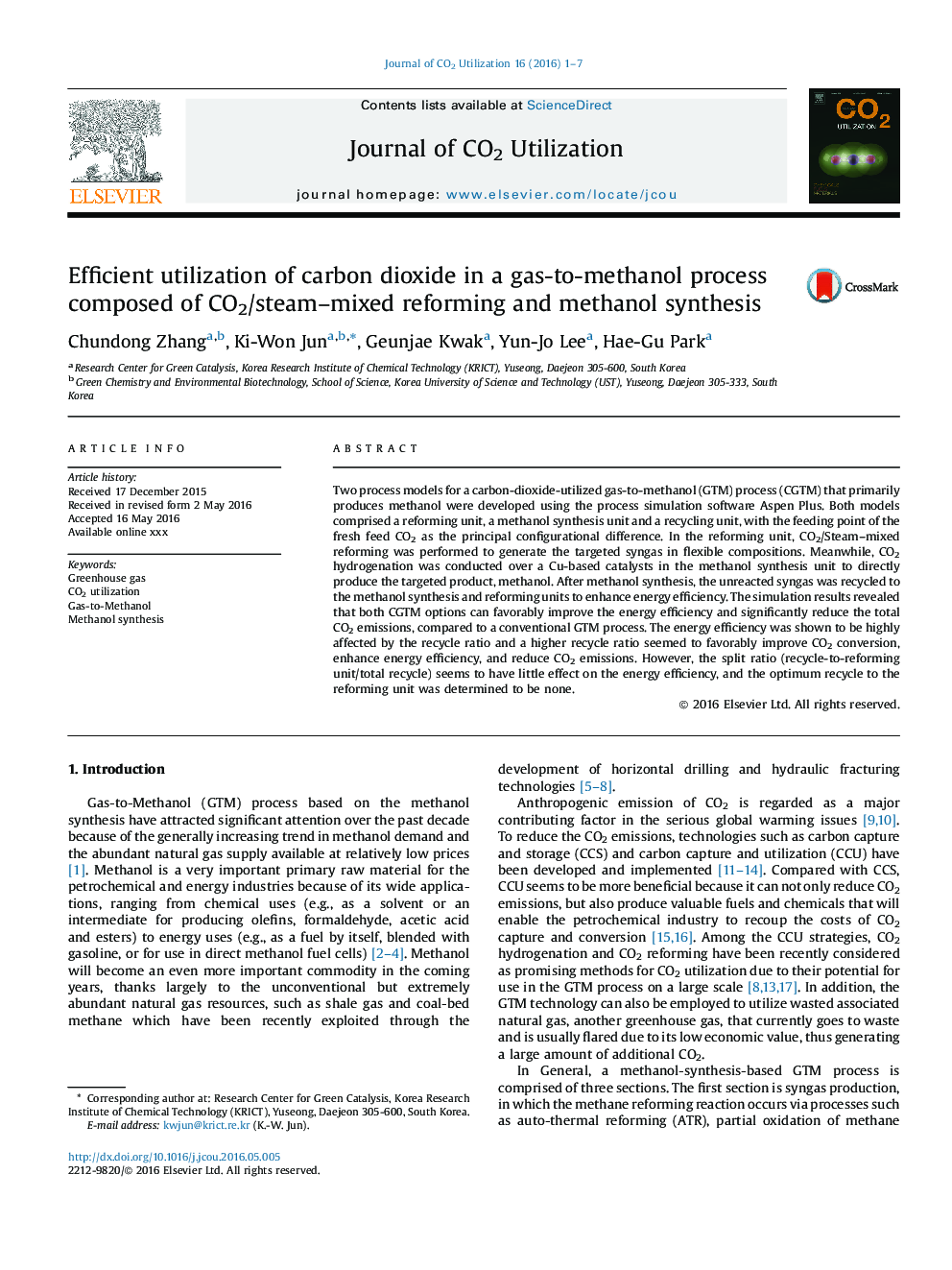| کد مقاله | کد نشریه | سال انتشار | مقاله انگلیسی | نسخه تمام متن |
|---|---|---|---|---|
| 63512 | 48222 | 2016 | 7 صفحه PDF | دانلود رایگان |
• Two options of CO2 utilized gas-to-methanol (CGTM) process were proposed using Aspen Plus.
• CO2 was utilized via CO2/Steam-mixed reforming and CO2 hydrogenation.
• Effects of recycle and split ratios on the performance of both CGTM options were investigated.
• Performance comparison of both CGTM options and conventional GTM process was conducted.
• Improved energy efficiency and reduced CO2 emissions were realized via CO2 utilization.
Two process models for a carbon-dioxide-utilized gas-to-methanol (GTM) process (CGTM) that primarily produces methanol were developed using the process simulation software Aspen Plus. Both models comprised a reforming unit, a methanol synthesis unit and a recycling unit, with the feeding point of the fresh feed CO2 as the principal configurational difference. In the reforming unit, CO2/Steam–mixed reforming was performed to generate the targeted syngas in flexible compositions. Meanwhile, CO2 hydrogenation was conducted over a Cu-based catalysts in the methanol synthesis unit to directly produce the targeted product, methanol. After methanol synthesis, the unreacted syngas was recycled to the methanol synthesis and reforming units to enhance energy efficiency. The simulation results revealed that both CGTM options can favorably improve the energy efficiency and significantly reduce the total CO2 emissions, compared to a conventional GTM process. The energy efficiency was shown to be highly affected by the recycle ratio and a higher recycle ratio seemed to favorably improve CO2 conversion, enhance energy efficiency, and reduce CO2 emissions. However, the split ratio (recycle-to-reforming unit/total recycle) seems to have little effect on the energy efficiency, and the optimum recycle to the reforming unit was determined to be none.
Figure optionsDownload as PowerPoint slide
Journal: Journal of CO2 Utilization - Volume 16, December 2016, Pages 1–7
